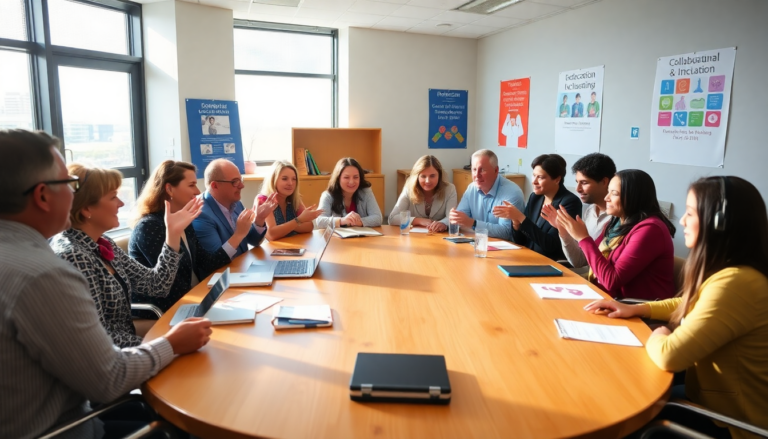Argomenti trattati
In an era where education often seems fragmented, Monmouth County is stepping up with a refreshing collaborative approach. For nearly a decade, the Monmouth County Education Association (MCEA) has been working closely with local school leaders and superintendents, aiming to create a more connected educational landscape. The vision of Dr. Lester Richens, the county’s Superintendent of Schools, and other leaders is coming to fruition through a series of workshops designed to bridge gaps and foster trust among stakeholders.
Building bridges through professional development
Initially, the professional development workshops organized by the MCEA attracted only a handful of districts. However, a shift occurred when they adopted methodologies from the New Jersey Labor Management Collaborative (NJLMC). This new approach not only structured meetings more effectively but also encouraged a mix of local leaders and district superintendents to sit together. By changing seating arrangements, they promoted open dialogue and shared experiences, which was a game changer. Who knew that something as simple as where people sat could lead to meaningful conversations and collaborations?
A safe space for collaboration
These workshops have transformed into popular events, drawing participants from various localities who might not typically engage with one another. The NJLMC format has proven to be effective, facilitating deeper discussions on critical issues in education. One standout session focused on the Line of 1-7 decision-making process, which many found to be both productive and valuable. Participants left equipped with actionable insights to bring back to their schools, reinforcing the purpose behind these gatherings.
Success stories emerging from collaboration
One local association, facing significant challenges at the start of the school year, has seen a remarkable turnaround thanks to this collaborative approach. With new leadership and a renewed sense of purpose, they’ve managed to resolve lingering grievances and foster a culture of cooperation. This success story underscores the potential of collaborative efforts to transform even the most difficult situations in education.
Open channels of communication
During one of the workshops, a superintendent expressed interest in reviewing contract language from another local association. This simple exchange symbolizes a broader shift towards transparency and communication that has long been lacking in educational leadership. The ability to openly share and compare resources is crucial for growth and improvement. It’s not just about fixing problems; it’s about building a community where ideas flow freely.
Encouraging wider participation
As the momentum builds, there’s a strong desire for even more local associations and district administrators to engage in the LMC process. The initiative holds immense potential for everyone involved, irrespective of their current standing in labor relations. By fostering a culture of collaboration, Monmouth County is paving the way for a more connected and effective educational environment.
Looking ahead
The journey towards a more collaborative educational landscape is just beginning, and the impact of these initiatives may resonate for years to come. It’s about more than just meetings and workshops; it’s about building relationships that can withstand the tests of time and challenge. As more stakeholders come together, the potential for positive change in Monmouth County education continues to grow.

